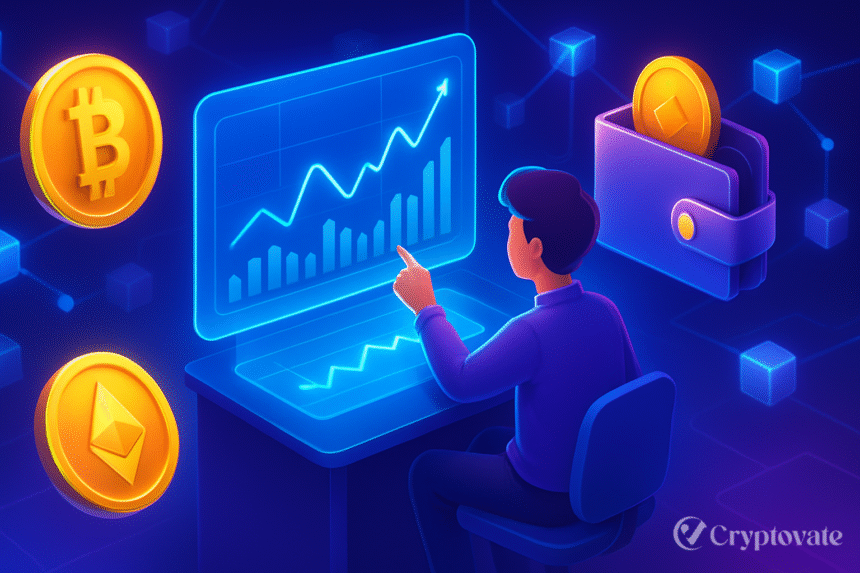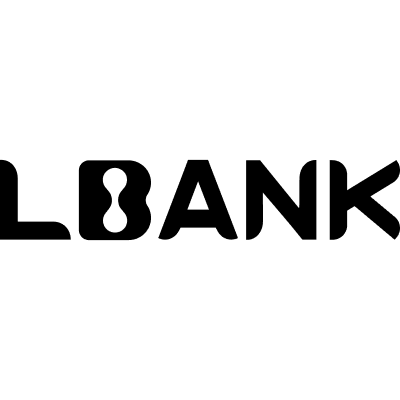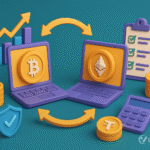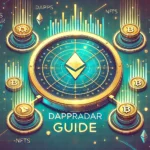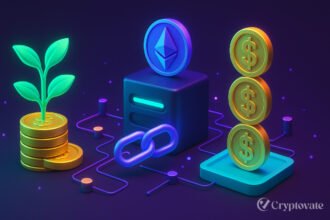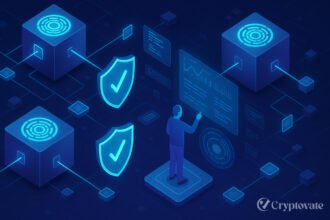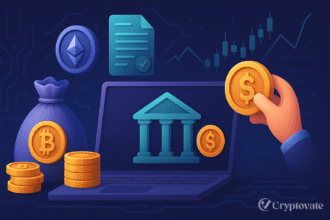– Ad –
| Getting your Trinity Audio player ready... |
Decentralized Finance (DeFi) is revolutionizing how we manage money, offering open access to financial tools like trading, lending, and earning interest without banks. If you’re new to DeFi, the process might seem daunting, but it’s easier than you think. This guide breaks down the essential steps to get started with DeFi, from setting up a wallet to making your first transaction. Whether you aim to swap tokens or explore yield farming, we’ll help you begin confidently.
For a deeper dive into DeFi basics, read our Decentralized Finance (DeFi): A Beginner’s Guide.
What You Need to Begin
To start with DeFi, you’ll need:
- A cryptocurrency wallet (e.g., MetaMask or Coinbase Wallet).
- Cryptocurrency, such as Ethereum (ETH) or stablecoins (e.g., USDC, DAI).
- A secure internet connection and device.
- A basic understanding of blockchain (don’t worry if you’re still learning!).
Let’s explore the six key steps to kickstart your DeFi journey.
Step 1: Set Up a Cryptocurrency Wallet
A crypto wallet is your entry point to DeFi. It holds your private keys, enabling you to interact with decentralized applications (dApps) like Uniswap or Aave.
Choosing the Right Wallet
- MetaMask: A widely used wallet for Ethereum-based DeFi, offered as a browser extension or mobile app.
- Coinbase Wallet: User-friendly with a simple interface, supporting various blockchains, perfect for beginners.
- Trust Wallet: Great for mobile users, compatible with Ethereum and Binance Smart Chain.
Setting Up MetaMask
- Go to metamask.io and install the browser extension or app.
- Select “Create a Wallet” and choose a strong password (at least 12 characters).
- Write down your 12-word seed phrase on paper and store it offline—never share it or store it digitally.
- Confirm the seed phrase to activate your wallet.
- Add the Ethereum Mainnet (default) or explore Layer-2 networks like Polygon for lower fees.
Security Tip: For large investments, consider a hardware wallet like Ledger for enhanced protection.
Step 2: Buy Cryptocurrency
Most DeFi platforms run on Ethereum, so you’ll need ETH for transactions and gas fees. Stablecoins like USDC or DAI are great for DeFi due to their price stability.
Where to Purchase Crypto
- Centralized Exchanges (CEXs):
- Coinbase: Easy for beginners, supports card payments.
- Binance: Offers low fees and a wide coin selection.
- Kraken: Known for strong security and compliance.
- Peer-to-Peer Platforms: LocalBitcoins or Paxful for direct purchases with cash or bank transfers.
How to Buy ETH
- Sign up on a CEX like Coinbase and complete KYC verification (ID and address proof).
- Deposit funds via bank transfer, debit card, or PayPal (options vary by platform).
- Purchase ETH or a stablecoin like USDC.
- Transfer to your MetaMask wallet:
- Copy your MetaMask address (starts with “0x”).
- Paste it into the CEX’s withdrawal section.
- Verify the address carefully to avoid errors.
- Wait 5–30 minutes for the transfer to confirm.
Note: Always keep 0.01–0.05 ETH in your wallet for gas fees, which range from $1–$10 depending on network traffic.
Step 3: Connect to a DeFi Platform
DeFi platforms, or dApps, enable activities like trading, lending, or staking. Popular options include Uniswap (swapping), Aave (lending), and Compound (yield farming).
Selecting a Platform
- Uniswap: A decentralized exchange (DEX) for token swaps.
- Aave: Lend assets to earn interest or borrow against collateral.
- Curve Finance: Low-fee swaps for stablecoins.
- Compound: Earn yield by supplying assets to lending pools.
Connecting to Uniswap
- Visit app.uniswap.org.
- Click “Connect Wallet” and choose MetaMask.
- Approve the connection in MetaMask.
- Ensure you’re on Ethereum Mainnet or a Layer-2 like Arbitrum for cheaper fees.
Tip: Bookmark official dApp URLs to avoid phishing sites mimicking popular platforms.
Step 4: Make Your First Transaction
Let’s try swapping tokens on Uniswap as your first DeFi transaction—a simple way to get started.
Swapping Tokens on Uniswap
- Select the tokens to swap (e.g., ETH for USDC).
- Enter the amount (e.g., 0.1 ETH).
- Check the estimated output, slippage (price change tolerance, set to 0.5–1%), and gas fees.
- Click “Swap” and confirm in MetaMask.
- Wait 1–5 minutes for the transaction to complete.
Example: Swap 0.1 ETH for USDC to use in lending protocols later.
Managing Gas Fees
- Gas fees pay Ethereum miners to process transactions.
- Check current gas prices at etherscan.io/gas-tracker.
- Use Layer-2 networks like Optimism or Arbitrum to save on fees (often under $1).
Step 5: Explore DeFi Opportunities
Once you’re comfortable, dive into other DeFi activities:
- Yield Farming: Provide liquidity on Uniswap or Curve to earn trading fees.
- Lending/Borrowing: Deposit USDC on Aave to earn 2–5% APY or borrow against ETH.
- Staking: Lock tokens on Lido to earn 3–4% rewards on ETH.
- Governance: Vote on protocol changes with tokens like UNI or COMP.
Caution: High yields come with risks like impermanent loss (value changes in liquidity pools) or smart contract bugs. Research thoroughly.
Step 6: Stay Safe in paces, like Discord, for tips, but beware of fake “support” accounts.
Why DeFi Matters
DeFi empowers you with:
- Accessibility: No bank or ID required—anyone with internet can participate.
- Control: You manage your funds, not a bank or broker.
- Opportunity: Earn higher yields than traditional savings (e.g., 2–10% APY vs. 0.5%).
- Innovation: Join a global, decentralized financial system.
Conclusion
Starting with DeFi is an exciting step toward financial freedom. By setting up a wallet, buying crypto, and exploring platforms like Uniswap, you’re part of a decentralized revolution. Take it slow, prioritize security, and keep learning. Have questions or experiences to share? Drop a comment below!
FAQs
How much money do I need to start DeFi?
You can begin with $50–$100, covering ETH for gas and tokens for transactions. Layer-2 networks reduce costs significantly.
Is DeFi safe for beginners?
DeFi has risks (scams, contract bugs), but it’s safe with audited platforms, secure wallets, and small initial investments. Research is key.
Do I need coding skills for DeFi?
No, platforms like Uniswap have user-friendly interfaces. Basic wallet and transaction knowledge is enough.
How can I lower DeFi gas fees?
Use Layer-2 solutions (e.g., Arbitrum, Optimism) or transact during low network congestion. Check gas trackers for timing.
Can I use DeFi on blockchains other than Ethereum?
Yes, Binance Smart Chain, Polygon, and Solana offer DeFi with lower fees, but Ethereum has the most robust ecosystem.


